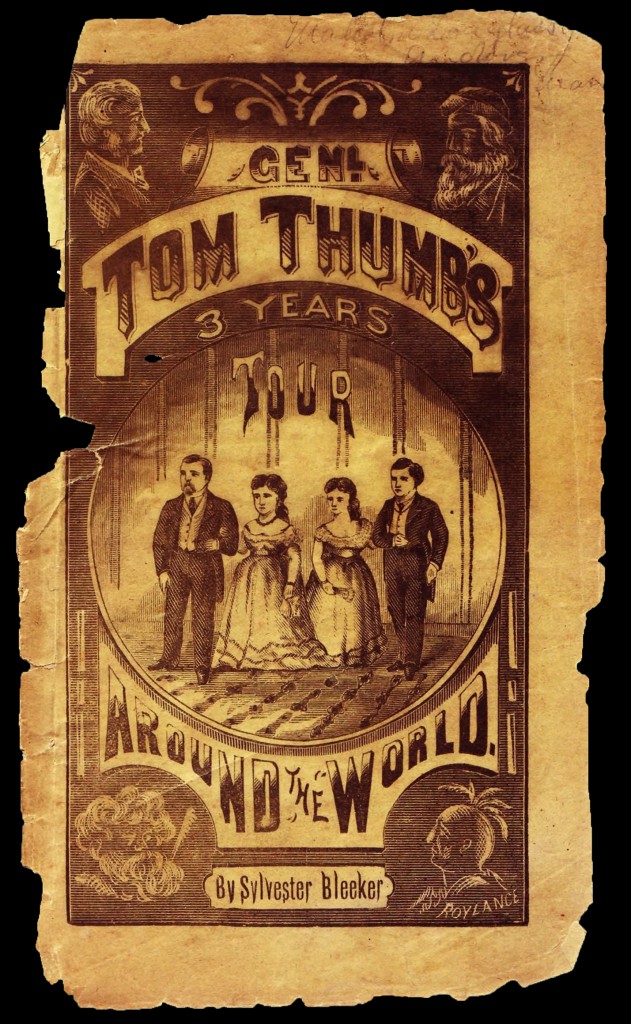First and foremost among the group of globe-trotting mid-nineteenth-century entertainers was a dwarf named Charles S. Stratton, who was discovered by P.T. Barnum in 1842 and became famous the world over as General Tom Thumb. With the completion of the transcontinental railroad in 1869, Barnum conceived of the idea of sending the General Tom Thumb Company on a grandly publicized “Tour of the World.” The company was managed by Sylvester Bleeker, who also authored a 144 page illustrated account of the experience: Gen. Tom Thumb’s Three Years’ Tour Around the World: Accompanied by His Wife, Lavinia Warren Stratton, Commodore Nutt, Miss Minnie Warren, and Party(New York: S. Booth, 1872).
It was perhaps the first truly global tour by an entertainer traveling exclusively by steam power, i.e. railroads and steamships, as the company left New York City on June 21, 1869 and crossed the country on the Pacific Railroad. After visiting the Northwest, they departed from San Francisco on the Pacific Mail Steamship America for Yokohama on November 4. From Japan, the General Tom Thumb Company toured the China coast and then went on to to Singapore, Penang, and Ceylon before circling back to the Australian colonies, where they performed for nine months. In November 1870, they embarked for India, where they visited Madras, Calcutta, Allahbad, Delhi, and Bombay. The company sailed through the recently completed Suez Canal in March 1871 and made a brief tour through Continental Europe, arriving in London in April. After spending a little over a year touring through the British Isles, the General Tom Thumb Company made their triumphant return to New York City on June 22, 1872, exactly three years and a day since their departure. All told, Bleeker reported that the party had traveled 55,487 miles (31,216 by sea) and had given 1,471 shows in 587 different locales. More significantly, he reported a profit of $80,000. Although I was most interested in the Pacific leg, the overall tour was an impressive indication of the ongoing processes of globalization and the ability of U.S. entertainers to exploit the opportunities this opened up. The route tells us much about the development of cultural markets and infrastructure in the Pacific and around the world. See below for a short video charting the route using Google Earth and some rectified historical maps:

